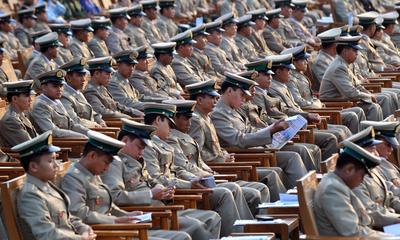It has also reached ceasefires with all but one of the country’s main insurgent groups, undertaken major economic reforms, and launched a campaign for ‘clean government’.
Sceptics believe change was forced upon the military leadership by Western sanctions and fear that political foment in North Africa and the Middle East might spread to Myanmar, and that reforms are intended simply to shore up the regime and protect military interests. This line of reasoning is unconvincing, however. Myanmar’s military rulers have a proud record of resisting external pressure, which goes to the heart of their self-legitimation, and there have been no clear and present threats to the regime’s power base in recent years. Most tellingly perhaps, the recent reforms have gone much further than a conservative agenda would have warranted, and have come to pose a significant threat to many vested interests.
As in any transition, the motivations for change are complex and vary among different individuals and factions. But the new government is undertaking reform because it wants to (and can afford to), not because it had to. Five factors in particular are critical for understanding the timing, content and speed of the ongoing reform process.
First, the military’s self-image. The Tatmadaw (Myanmar’s military) has never seen itself as a ruling class. Its self-image is that of a ‘guardian’, which steps in at times of crisis to save the Union and restore law and order. In the 1970s, Ne Win ended 12 years of direct military rule by introducing a socialist one-party system. By 1988, however, the world zeitgeist had changed, and the only legitimate system of government was multiparty democracy. Thus, there was never really any doubt that the military would hand back the reins of government to a, nominally at least, elected government.
Second, security perceptions. That it took two decades for the military to transfer power to civilians was due, in large part, to a deep concern with political stability and personal security. By the late 2000s, however, both the democratic and the ethnic opposition had been decimated, and with the 2008 constitution the military had a critical tool in hand to manage the pace of change. Far from bending to external pressure, the military leaders thus entered into reform from a position of strength.
Third, leadership change. Compared to Senior General Than Shwe, who ruled Myanmar from 1992 to 2011, President Thein Sein is a very different leader. He takes advice; he is not corrupt; and he is genuinely concerned not just about the country in some abstract sense but also about the welfare of ordinary people. Along with fellow reformers like the speaker of the lower house, Shwe Mann, he has demonstrated an unprecedented willingness to reach out to old enemies and make them partners in the pursuit of peace and development.
Fourth, the deteriorating economic situation. While the Tatmadaw has traditionally been preoccupied with national security, there has always been an underlying concern with economic development and modernisation. Failure in this area prompted significant reforms in the mid-1980s, as well as in the early to mid-1990s, and has been the source of significant and growing internal military criticism since the Asian economic crisis in particular. The fact is that, aside from a few hundred generals and crony businessmen, the economic system under the previous regime served no one in the country. On the contrary, there was a growing sense that Myanmar was being left behind and exploited by its neighbours. This not only explains what is driving Thein Sein and his reform faction, but also goes a long way towards explaining why there has been relatively little push-back from the wider military and economic elite.
Fifth, political momentum. The decision by the opposition, both democratic and ethnic, to work with the new government to promote peace and democracy has greatly enhanced confidence in the reform process and encouraged the government to ‘go all in’. Similarly, the rapid normalisation of relations with the West has been immensely important in helping lock in the reforms and build momentum for further change.
Transitions are invariably periods of high uncertainty and it is far too early to judge how far the current democratisation process will go. Establishing genuine civilian supremacy and making the reform process irreversible will be a long-term project. Yet, as long as no new threats to political stability arise and civilian governments forego any attempt to exact retribution or seriously curtail the professional interests of the military as an institution, the Tatmadaw is likely to accept a diminished political role.
Morten B. Pedersen is a Senior Lecturer in International and Political Studies at the University of New South Wales, Canberra.
Pedersen presented his research at the 2013 Myanmar/Burma Update. The annual conference is hosted by the College of Asia and the Pacific, the Australian National University.

